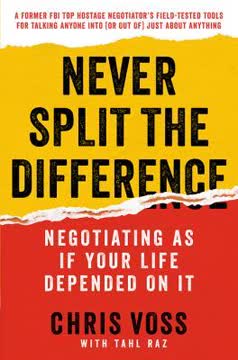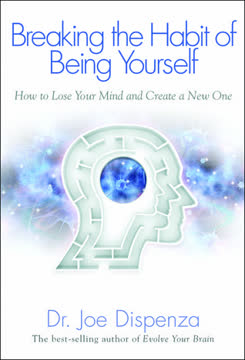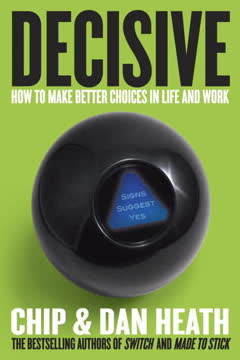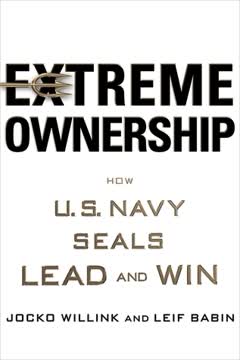Key Takeaways
1. Solutions Require Mutual Agreement and Measurable Improvement
So a solution is a mutually agreed-upon answer to a recognized problem, and the answer provides measurable improvement.
Beyond Products. A true solution transcends mere products or services; it's a collaborative endeavor where both the seller and the buyer acknowledge a specific problem and concur on the proposed resolution. This agreement is not just a formality but a fundamental requirement for a successful outcome. The solution must also deliver tangible, quantifiable results, demonstrating a clear improvement from the initial state.
Measurable Impact. The essence of a solution lies in its ability to create a measurable difference. This involves establishing a baseline before implementation and then tracking the changes after the solution is applied. This "before and after" comparison provides concrete evidence of the solution's effectiveness and justifies the investment made.
Transformation, Not Transaction. Companies seeking to transition from product-centric to solution-centric approaches must recognize that this shift requires a deep organizational commitment. It involves not only adapting sales and marketing strategies but also fostering a culture that prioritizes problem-solving and delivering measurable value to customers. This transformation demands a holistic approach, engaging all stakeholders in a shared mission to achieve positive change.
2. Solution Selling: A Philosophy, Map, Methodology, and Management System
Solution Selling does not become another thing to do (on the list of mounting chores). It becomes the thing to do for salespeople, marketers, and managers.
Customer-Centric Approach. Solution Selling is more than just a sales technique; it's a comprehensive philosophy that places the customer at the heart of every action. It's about understanding their unique challenges and aligning your efforts to help them achieve positive, measurable outcomes. This customer-centric approach ensures that every step in the sales process is geared towards delivering value and building long-term relationships.
Navigating the Sales Landscape. Solution Selling provides a clear roadmap for navigating the complexities of the sales process, from initial contact to closing the deal and beyond. This map outlines the essential steps, including pre-call planning, interest creation, problem diagnosis, vision processing, control, closing, and post-sale tracking. It equips salespeople with the knowledge and tools to effectively manage each stage of the sales cycle.
Tools and Techniques. Solution Selling offers a robust methodology, a system of methods that includes tools, job aids, techniques, and procedures that help salespeople and sales teams navigate the selling steps that close more sales faster. It provides salespeople with the resources they need to execute each step effectively, leading to increased customer satisfaction and improved sales productivity.
3. Sales Process Bridges the Gap Between Eagles and Journeypeople
A good sales process allows Journeypeople to emulate Eagle selling behavior, maximize their individual sales performance, and learn how to become tomorrow’s sales managers.
Unlocking Potential. Sales teams typically consist of two distinct groups: "Eagles," the naturally gifted salespeople who intuitively excel, and "Journeypeople," the willing and capable individuals who benefit from a structured approach. A well-defined sales process empowers Journeypeople to emulate the behaviors of Eagles, maximizing their individual performance and contributing significantly to the company's overall success.
Process for All. A sales process provides a framework that both Eagles and Journeypeople can follow, ensuring consistency and predictability in their sales efforts. This framework outlines the essential steps, from identifying leads to closing deals, and provides guidance on how to execute each step effectively. This is especially important when Eagles are promoted to sales management, as they can now teach and mentor Journeypeople.
Addressing the 64% Dilemma. The "64% dilemma" highlights the challenge of assigning less experienced salespeople (Journeypeople) to the most demanding customer segments. A sales process helps bridge this gap by providing Journeypeople with the tools and knowledge they need to effectively engage with these challenging buyers, increasing their chances of success.
4. Situational Fluency: The Key to Buyer Connection
Buyers want to do business with salespeople who understand them—their jobs and their problems.
Understanding the Buyer's World. Buyers are drawn to salespeople who demonstrate a deep understanding of their specific situation, including their roles, challenges, and industry dynamics. This "situational fluency" goes beyond simply knowing the buyer's name and company; it involves grasping the nuances of their business and the pressures they face.
Building Credibility. Salespeople who possess situational fluency can quickly establish credibility with buyers by demonstrating that they "get it." This understanding allows them to engage in meaningful conversations, ask relevant questions, and offer tailored solutions that address the buyer's specific needs.
Integrating Knowledge and Skills. Solution Selling develops situational fluency by integrating the knowledge competencies (situational knowledge and capability knowledge) with people skills and selling skills. It's not enough to simply have product knowledge or closing techniques; salespeople must also possess the ability to connect with buyers on a personal level and understand their unique circumstances.
5. Solution Selling Principles: Guiding Stars for Sales Success
The foundation principle of Solution Selling is: No pain, no change.
Pain as a Catalyst. The cornerstone of Solution Selling is the principle that "no pain, no change." This means that buyers are unlikely to take action unless they perceive a problem, challenge, or missed opportunity that compels them to seek a solution. Identifying and quantifying this "pain" is crucial for motivating buyers to consider change.
Interconnected Challenges. Problems within an organization are rarely isolated; they often cascade and impact multiple individuals and departments. Recognizing these interconnected challenges, or "Pain Chains," allows salespeople to address the root causes of problems and offer comprehensive solutions that benefit the entire organization.
The Sales Success Formula. The formula for sales success is Pain × Power × Vision × Value × Control = Sale. Each element of the formula should be monitored as a part of the sales process. Because it’s a formula, if you have a zero in any variable on the left, you get a zero or no sale on the right.
6. Sales Process: A Roadmap to Increased Productivity
A sale is a series of defined, repeatable steps that, if performed well and consistently, will lead to expected results.
Systematic Approach. A sales process is a structured series of actions designed to achieve a specific outcome: increased sales productivity. By defining and documenting each step in the sales cycle, from lead generation to closing the deal, a sales process provides a roadmap for salespeople to follow.
Alignment with the Buyer. A good sales process is not just about what the salesperson does; it's about aligning those actions with how buyers actually make decisions. This means understanding the buyer's journey, their concerns at each stage, and tailoring the sales approach accordingly.
Key Elements. The five key elements included in a sales process are:
- The customer’s buying process
- Selling steps that align with the buying process
- Verifiable outcomes that let the salespeople know if they’ve been successful at each selling step
- Job aids and tools that facilitate each processes’s selling step
- A management system that measures and reinforces the process and also determines the probability of success
7. Precall Planning: Laying the Foundation for Opportunity
When it comes to precall planning, salespeople should try to uncover buyer data and critical issues that will be relevant to their conversations with executives.
Situational Knowledge. Effective precall planning involves gathering comprehensive information about the prospective buyer, their company, and their industry. This research helps salespeople develop "situational knowledge," which is essential for engaging in meaningful conversations with executives and building credibility.
Building a Straw Man. Creating a "straw man," or a model of the ideal target opportunity, can significantly improve a salesperson's ability to identify and pursue promising leads. This model should include key characteristics of the target opportunity, such as industry, size, key players, and potential pain points.
Leveraging Job Aids. Solution Selling provides a range of job aids and sales tools to support precall planning, including Key Players Lists, Pain Chains, Reference Stories, and Value Propositions. These tools help salespeople organize their research, identify potential opportunities, and craft compelling messages that resonate with buyers.
8. Stimulating Interest: Prospecting Beyond the Obvious
Prospecting stimulates and creates interest where there currently is none.
Prospecting vs. Polling. True prospecting goes beyond simply identifying people who are already looking to buy something ("polling"). It involves actively stimulating interest and creating demand for your products or services in the "Not Looking" segment of the market.
Creating Curiosity. The goal of prospecting is to pique the buyer's curiosity and make them want to learn more. This is achieved by focusing on their potential pain points and offering a glimpse of how your solutions can address those challenges.
Business Development Prompters. Business Development Prompters are designed to help you create new opportunities in latent pain markets—your Not Looking territory. A Business Development Prompter can be sent by mail, fax, or email, talked about on the telephone, used in face-to-face direct sales meetings, mailed as part of a direct-mail piece, or used at a trade show virtually anywhere. This job aid is designed to create curiosity, not to sell anything.
9. Diagnose Before You Prescribe: The 9 Block Model
If buyers don’t trust your diagnosis, they won’t trust your prescription.
Understanding the Problem. Before offering a solution, it's crucial to thoroughly diagnose the buyer's problem. This involves asking probing questions to uncover the root causes of their pain, exploring the impact of the problem throughout the organization, and understanding their vision for a solution.
The 9 Block Vision Processing Model. The 9 Block Vision Processing Model provides a structured framework for diagnosing buyer pains and creating visions of solutions. This model uses a combination of open, control, and confirming questions to guide the conversation and ensure alignment between the seller and the buyer.
Situational Fluency. The 9 Block Model uses three different types of questions: open, control (closed), and confirming questions. I often refer to these three question types as Questioning Etiquette 101.
10. Vision Re-engineering: Winning When You're Not First
If you don’t have a strong advantage, don’t compete Head-to-Head; instead, select the End-Around strategy, or indirect selling maneuver.
The End-Around Strategy. When competing in active opportunities where a competitor has already established a strong position, the "End-Around" strategy is often the most effective approach. This involves re-engineering the buyer's existing vision to align with your unique strengths and differentiators.
Changing the Rules. Vision re-engineering requires changing the evaluation matrix, changing the buying requirements, or even expanding the requirements. If you can do this and you bring value to the situation, you stand a good chance of moving into Column A.
The 9 Block Model for Re-engineering. The 9 Block Vision Processing Model can also be used to re-engineer a buyer's vision. In this case, the process starts by understanding the buyer's existing vision (Box C1) and then working backward to identify the underlying problems and explore alternative solutions.
11. Power: Selling to Those Who Can Buy
You can’t sell to someone who can’t buy; however, you can spend a great deal of time, money, and effort with people who can’t make a purchasing decision—and a lot of salespeople do.
Targeting Power. It's essential to focus your efforts on individuals who have the authority to make buying decisions or the influence to get what they want. Spending time with people who lack this power is often a waste of resources.
The Power Sponsor. If you're not dealing directly with a power person, it's crucial to identify a "Sponsor" within the organization who can provide you with access to power. This Sponsor should be someone who believes in your solution and is willing to advocate for it internally.
Negotiating Access. If the Sponsor doesn't readily offer access to power, you may need to negotiate. This involves offering something of value in exchange for the opportunity to present your solution to the decision-makers.
12. Control: Guiding the Buying Process to a Mutually Beneficial Close
The role of the salesperson in Solution Selling is to be a buying facilitator.
Project Management Techniques. Incorporating project management techniques into the sales process can help transform selling activities from a series of random events into a logical sequence that concludes with a successful sale.
The Evaluation Plan. The Evaluation Plan is a key tool for exerting control over the buying process. This plan outlines the steps involved in the evaluation, the timeline for each step, and the criteria for making a decision.
Value Justification. Value justification gives customers a compelling reason to take action. People will spend money if they can see that doing so will enable them to make more money or save money they’re currently spending.
13. Sales Management: Coaching, Forecasting, and Process Integrity
Effective coaching requires sales managers to (1) coach key opportunities based on objective information, not subjective information, and (2) participate in and conduct regularly scheduled training and practice sessions that address selling skill deficiencies as well as reinforce the sales process.
Three Success Criteria. Most sales managers strive to meet three success criteria: (1) make the revenue numbers, (2) forecast sales revenues accurately, and (3) coach and develop the right team of people to get the job done.
Diagnosing the Pipeline. Sales managers must be able to analyze their pipelines to identify potential problems, such as bottlenecks, deficient selling behaviors, or inadequate sales support. This analysis requires a deep understanding of the sales process and the ability to interpret key metrics.
Coaching for Success. Effective coaching involves providing salespeople with targeted feedback and guidance based on objective data. This includes reviewing their execution of the sales process, identifying areas for improvement, and providing support to help them overcome challenges.
14. High-Performance Sales Cultures: Executive Leadership is Key
Creating a sales culture requires both vision and executive leadership.
Four Essential Elements. A high-performance sales culture requires a holistic approach that integrates four key elements: a well-defined sales process, a robust sales management system, effective sales automation, and seamless integration with marketing.
Executive Leadership. Creating and sustaining a high-performance sales culture requires strong leadership from the top. Executives must champion the sales process, invest in the necessary tools and training, and foster a culture of continuous improvement.
Three Options for Executives. If you look at the HPSC model in Figure 16.1, you’ll see that the executive has three options: (1) improve efficiency, (2) improve effectiveness, or (3) achieve a balance between efficiency and effectiveness. Each option leads to different results.
Last updated:
Review Summary
The New Solution Selling receives mostly positive reviews, with an average rating of 3.85/5. Readers praise its methodical approach to solution-based selling, focusing on understanding customer needs and pain points. Many find it valuable for complex sales processes, particularly in software and consulting. Critics note some concepts are borrowed from earlier works. The book is seen as particularly useful for those transitioning from transactional to more complex sales roles, offering practical tools and strategies for effective solution selling.
Similar Books










Download PDF
Download EPUB
.epub digital book format is ideal for reading ebooks on phones, tablets, and e-readers.




